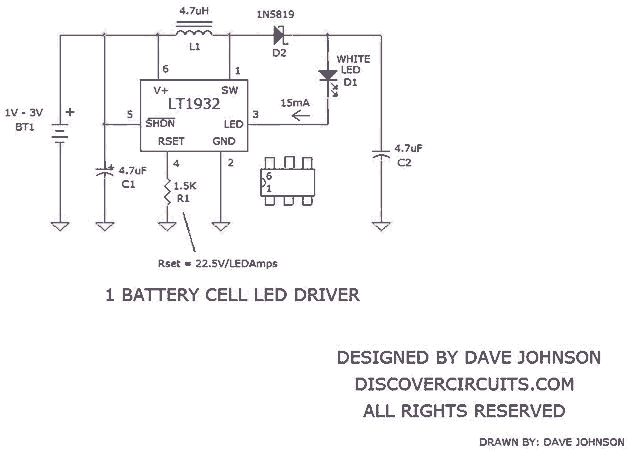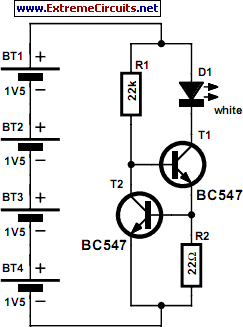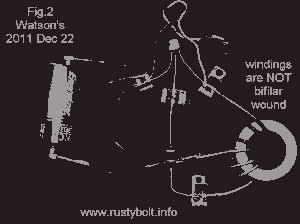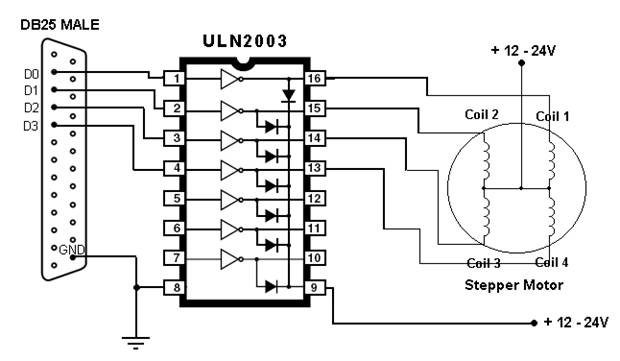
White LED is Powered by Joule thief

Numerous white LED driver circuits are available, with a well-known design called the Joule Thief capable of powering a single white LED from a 1.2V or 1.5V battery cell. Most of these circuits utilize one or two transistors to create a voltage boost circuit. While these circuits can illuminate an LED, they often lack efficiency and do not perform optimally.
The Joule Thief circuit is a minimalist design, typically composed of a few key components: a transistor, a resistor, an inductor (or a transformer), and a LED. It operates on the principle of boosting a low voltage to a higher voltage sufficient to drive the LED. The circuit usually employs a self-oscillating mechanism, where the transistor switches on and off rapidly, allowing energy to be stored in the inductor during the 'on' phase and released during the 'off' phase.
The primary component, a transistor (often a low-power NPN type), acts as a switch. When the circuit is powered, a small current flows through the base of the transistor, turning it on. This allows a larger current to flow from the battery through the inductor, which generates a magnetic field. When the transistor turns off, the magnetic field collapses, inducing a higher voltage across the inductor. This induced voltage can be significantly higher than the input voltage, sufficient to forward bias the white LED and produce light.
Despite its simplicity, the Joule Thief circuit is not highly efficient. The switching losses in the transistor, voltage drop across the components, and the non-ideal behavior of the inductor contribute to overall inefficiencies. Furthermore, the circuit may not provide a stable output current, which can lead to variations in LED brightness, especially as the battery voltage decreases.
For applications requiring more efficiency and stability, alternative LED driver circuits employing dedicated boost converter ICs or more complex topologies may be considered. These alternatives can provide better regulation of output current and voltage, ensuring consistent LED performance while maximizing battery life.There are a lot of white LED driver circuits floating around. A popular circuit called the Joule Thief can drive one white LED from a single 1.2v or 1.5v battery cell. Most of these circuits use one or two transistors to form a voltage boost circuit. Yes, they those circuit do drive a LED but they are not very efficient and they dont do a good job. 🔗 External reference
The Joule Thief circuit is a minimalist design, typically composed of a few key components: a transistor, a resistor, an inductor (or a transformer), and a LED. It operates on the principle of boosting a low voltage to a higher voltage sufficient to drive the LED. The circuit usually employs a self-oscillating mechanism, where the transistor switches on and off rapidly, allowing energy to be stored in the inductor during the 'on' phase and released during the 'off' phase.
The primary component, a transistor (often a low-power NPN type), acts as a switch. When the circuit is powered, a small current flows through the base of the transistor, turning it on. This allows a larger current to flow from the battery through the inductor, which generates a magnetic field. When the transistor turns off, the magnetic field collapses, inducing a higher voltage across the inductor. This induced voltage can be significantly higher than the input voltage, sufficient to forward bias the white LED and produce light.
Despite its simplicity, the Joule Thief circuit is not highly efficient. The switching losses in the transistor, voltage drop across the components, and the non-ideal behavior of the inductor contribute to overall inefficiencies. Furthermore, the circuit may not provide a stable output current, which can lead to variations in LED brightness, especially as the battery voltage decreases.
For applications requiring more efficiency and stability, alternative LED driver circuits employing dedicated boost converter ICs or more complex topologies may be considered. These alternatives can provide better regulation of output current and voltage, ensuring consistent LED performance while maximizing battery life.There are a lot of white LED driver circuits floating around. A popular circuit called the Joule Thief can drive one white LED from a single 1.2v or 1.5v battery cell. Most of these circuits use one or two transistors to form a voltage boost circuit. Yes, they those circuit do drive a LED but they are not very efficient and they dont do a good job. 🔗 External reference





